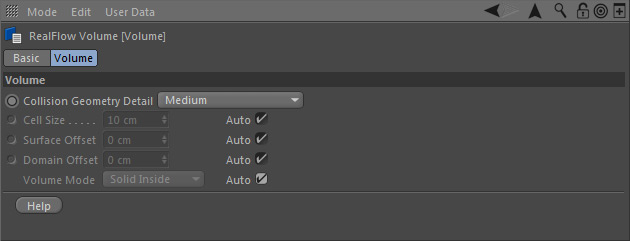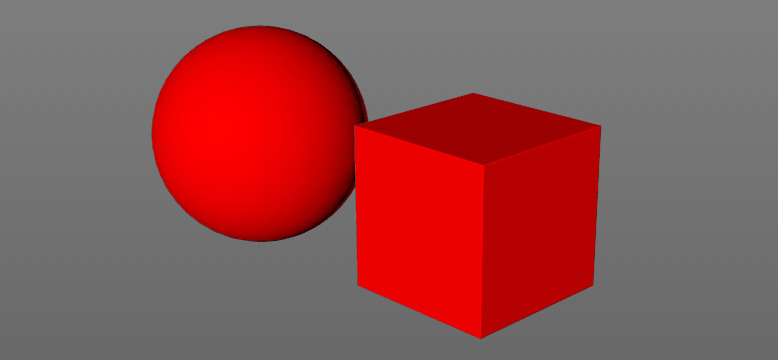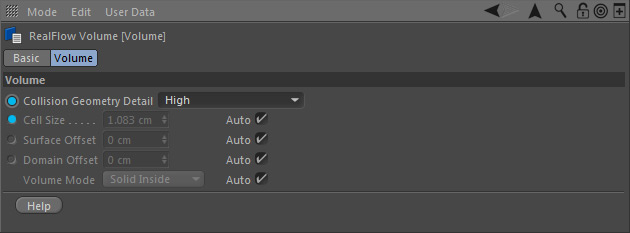Adding Objects
Tags
Objects, meant to interact with RealFlow | Cinema 4D fluids, require "Collider" and "Volume" tags:
- "Collider" defines the object's surface properties like stickiness, roughness, or friction.
- "Volume" defines how the fluid "sees" the objects in terms of inside and outside and resolution ("Cell Size").
The "Collider" and "Volume" tags.
Objects can be parametric or polygonal. The only exceptions are:
- If you want to create wet-dry maps from an object then it has to be made editable, because RealFlow | Cinema 4D requires UVW coordinates.
- The same applies for the "Object" emitter with an emission mask. The emission mask is defined through a material and therefore UVW coordinates are necessary as well.
Inside, Outside, Shell
The "Volume" tag specifies inside and outside ("Volume Mode", greyed out because of the "Auto" option) in conjunction with solid objects, e.g. closed cubes, or double-sided glasses and vases.
With single-sided objects like planes, glasses or open cubes it is not possible to make an inside-outside differentiation. Therefore the "Shell" mode is the right choice:
- "Shell" creates a virtual layer around the object in order to make it watertight. The thickness of this layer is
Cell Size * 3. - This means that particle will never touch the object's surface directly and there is always a – more or less – small gap between surface and particles. In many cases it is possible to close this gap with adequate mesh settings (higher radius).
It is possible to visualize RealFlow | Cinema 4D's internal collision geometry under Collider > Display > Show Collision Geometry:
These objects do not have holes or gaps and will be watertight.
Cell Size
RealFlow | Cinema 4D internally converts tagged objects into a grid made of cells. The size of the cells determines the quality of the grid-based representation: more cells = better transformation and accurate collision. Instead of estimating values you can choose from different quality levels and let RealFlow | Cinema 4D calculate the optimal "Cell Size":
Very large objects or a huge amount of objects with small "Cell Size" value allocate lots of RAM. This is of particular importance for simulations via the GPU, because the amount of free VRAM is typically between 4 and 8 GB and there is no fallback on the computer's RAM.
Instead of decreasing "Cell Size" to very small values it is often better to increase "Surface Offset". This parameter creates a virtual buffer or shell around an object and helps to make it watertight. With negative"Surface Offset" values it is even possible to make particles collide inside an object.


